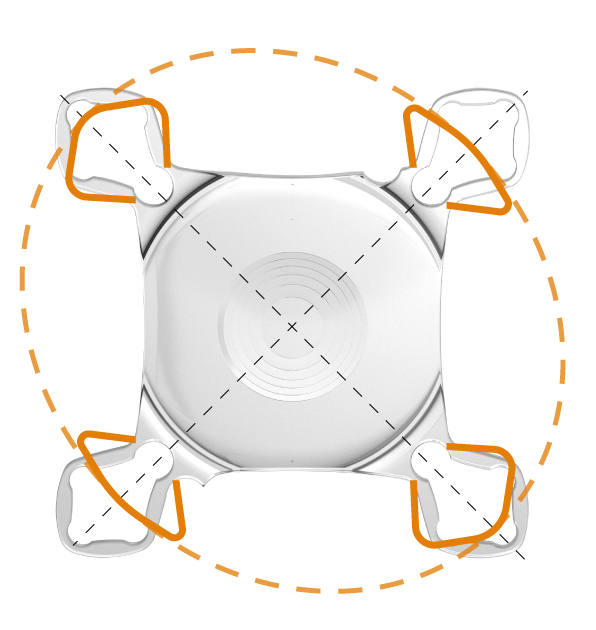Sulcus-based enhancement of visual quality
The 1stQ AddOn®
Introduction
Patient interest in reducing spectacle-dependence after cataract surgery is growing, and new technologies have emerged that enable surgeons to deliver on this goal by providing excellent refractive outcomes. Yet, concerns about visual quality have remained an obstacle to the greater adoption of presbyopia-correcting intraocular lenses (IOLs). Despite new generations of advanced capsular bag IOL technologies being available, certain limitations still exist especially considering special occupations or the chance of future ocular pathologies. Given its reversible nature, the 1stQ AddOn® may provide further options to address those. Moreover, even with careful surgical planning using modern biometry devices and IOL formulas, a residual refractive error that compromises postoperative vision and therefore patient satisfaction remains an issue in the current era of cataract surgery. The portfolio of 1stQ AddOn® supplementary IOLs, which includes refractive, toric, trifocal, and trifocal toric models, stands out as a solution that surgeons can rely on to provide high-quality vision whether patients are seeking to reduce spectacle-dependence for distance or for a full range of vision. As described in this supplement, findings from a growing number of clinical studies investigating the 1stQ AddOn® IOLs confirm their outstanding clinical performance characterised by predictable and durable refractive results, visual outcomes, and safety.
The sulcus is not the physiological site for IOL implantation, and insertion of an IOL in the ciliary sulcus poses numerous risks, including iris chafing, pigment dispersion syndrome, pupillary block, secondary angle closure and secondary glaucoma. The 1stQ AddOn® platform was designed to overcome these issues. Four main features describe the salient qualities of the 1stQ AddOn® platform: specially designed for sulcus implantation, rotational stability, preservation of anterior segment physiology, and clearance with the capsular bag IOL (Figure 1). “The stability of the AddOn lenses with their four-point fixation and their minimal potential for ciliary body touch are some of the key features of this platform,” said Brian Harrisberg MD, an expert in cataract and refractive surgery practising in Sydney, Australia. “I highly recommend the 1stQ AddOn® lenses as a supplemental sulcus-based platform that is associated with excellent visual acuity outcomes and no long-term adverse sequelae.”
Key Attributes of the 1stQ AddOn® IOLs
The 1stQ AddOn® IOLs can be used with any type (monofocal, multifocal) and power of primary capsular bag IOL. There are four main applications for implanting a 1stQ AddOn® IOL: refractive correction, astigmatism correction, trifocal upgrade, and planned dual procedure for potentially reversible multifocality (Figure 2).
 Figure 1. Figure 1. |
Variation in sulcus size & shape requires an adaptive design The unique 4-flex haptic configuration by 1stQ ensures independent anchorage on four pressure points as opposed to C-loop type sulcus lens designs. The 1stQ AddOn® Trifocal IOL maintains a stable position in eyes with a wide variety of axial lengths. |
 Figure 2. Figure 2. |
High rotational stability with the 1stQ AddOn non-torque design To date, no cases (0%) have been reported in which 1stQ AddOn® Toric IOLs needed repositioning. The mean absolute change in IOL – position was below 5o. This confirms a remarkably higher stability than that was published on C-loop type sulcus lens designs. |
